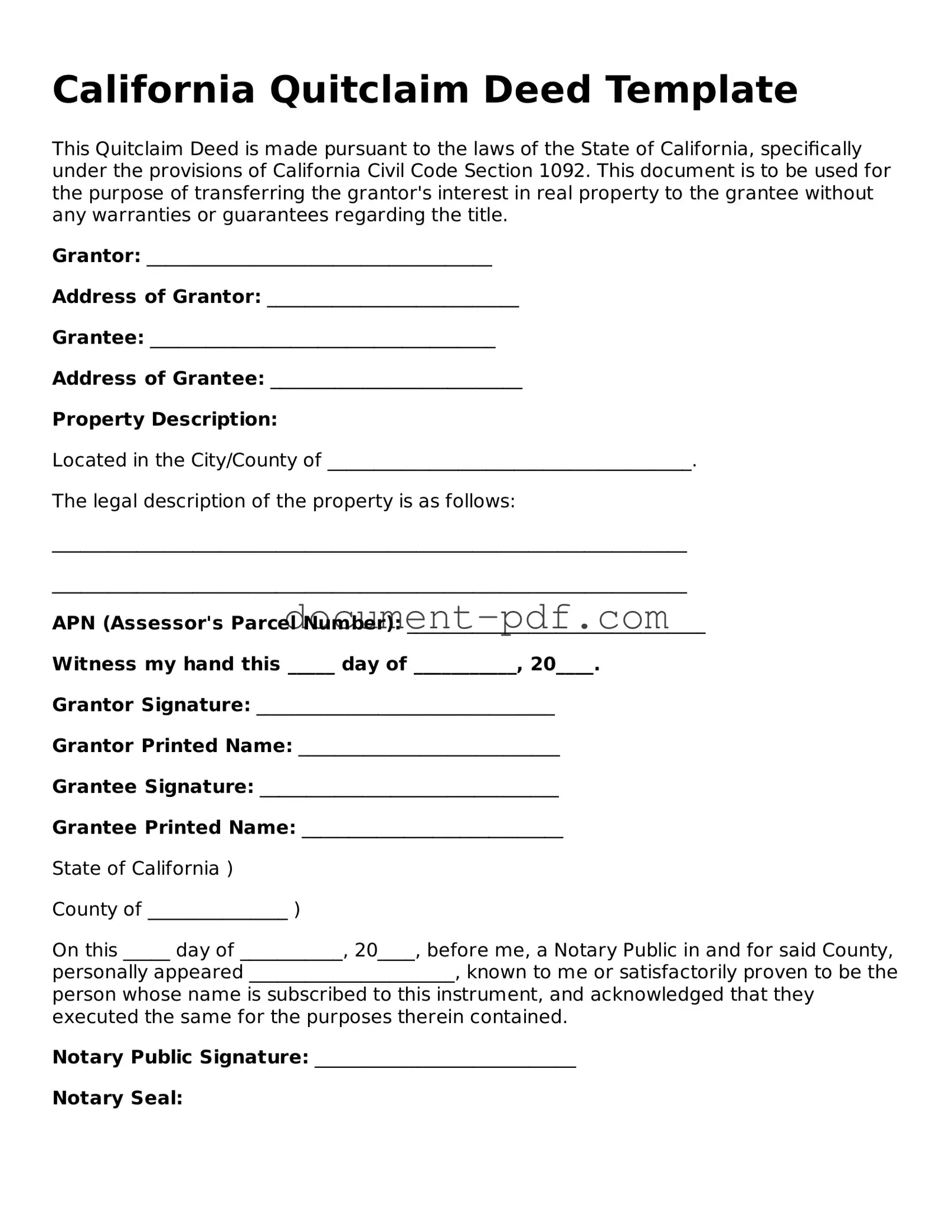California Quitclaim Deed Template
This Quitclaim Deed is made pursuant to the laws of the State of California, specifically under the provisions of California Civil Code Section 1092. This document is to be used for the purpose of transferring the grantor's interest in real property to the grantee without any warranties or guarantees regarding the title.
Grantor: _____________________________________
Address of Grantor: ___________________________
Grantee: _____________________________________
Address of Grantee: ___________________________
Property Description:
Located in the City/County of _______________________________________.
The legal description of the property is as follows:
____________________________________________________________________
____________________________________________________________________
APN (Assessor's Parcel Number): ________________________________
Witness my hand this _____ day of ___________, 20____.
Grantor Signature: ________________________________
Grantor Printed Name: ____________________________
Grantee Signature: ________________________________
Grantee Printed Name: ____________________________
State of California )
County of _______________ )
On this _____ day of ___________, 20____, before me, a Notary Public in and for said County, personally appeared ______________________, known to me or satisfactorily proven to be the person whose name is subscribed to this instrument, and acknowledged that they executed the same for the purposes therein contained.
Notary Public Signature: ____________________________
Notary Seal:
